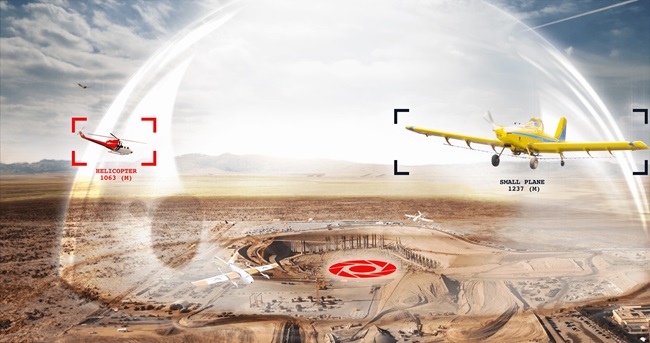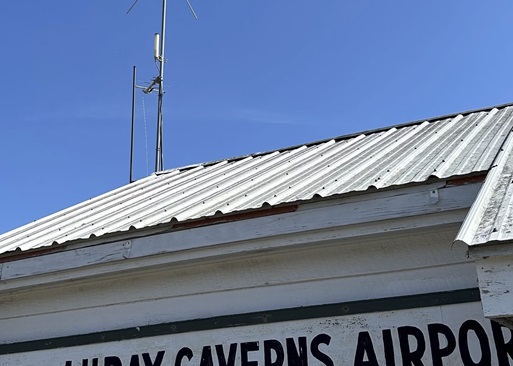ADS-B: Procrastinator’s guide to the mandate
Some ideas if you have six months to equip

Questions about equipping?The author is a regular presenter on ADS-B topics at the 2019 AOPA Fly-Ins.
(Photography by David Tulis)
ADS-B uses GPS satellites instead of ground-based radar to determine aircraft location, and is a key technology behind the FAA’s Next Generation Air Transportation System. The FAA has mandated ADS-B Out for flights after January 1, 2020, in airspace where a transponder is required today. ADS-B In, which provides enhanced pilot situational awareness through the display of weather and traffic information in the cockpit, is optional.
The first question to ask is, “Do I need to equip?” ADS-B Out is required only in the airspace defined by FAR 91.225. In the 48 contiguous states, that means all Class A, B, and C airspace; Class E airspace at or above 10,000 feet msl, excluding the airspace at and below 2,500 feet agl; within 30 nautical miles of a Class B primary airport (the Mode C veil); above the ceiling and within the lateral boundaries of Class B or Class C airspace up to 10,000 feet; and in Class E airspace over the Gulf of Mexico, at and above 3,000 feet msl, within 12 nautical miles of the U.S. coast. Except for the Gulf of Mexico airspace, this essentially is where a Mode C transponder is required today.
However, pilots who fly to airports near ADS-B airspace—especially under instrument flight rules—should seriously consider equipping. Following vectors assigned by air traffic control, or flying published instrument approaches, could place nonequipped aircraft in ADS-B airspace, and the rules do not provide a “get out of jail free” card in such scenarios.
Don’t focus on just the hardware costs. Ask your avionics shop to quote an installed price for equipment that appeals to you.Rune Duke, AOPA senior director of government affairs for airspace and air traffic, observed during a recent visit to Alaska for the Alaska Airmen Association’s 2019 Great Alaska Aviation Gathering that pilots aren’t aware of this potential problem (see “ADS-B Gotchas,” March 2019 AOPA Pilot). “It is clear talking to folks here in Anchorage that pilots didn’t realize Merrill Field IFR ops will require ADS-B,” he said. Merrill Field’s only IFR approach, the RNAV (GPS)-A, passes through Ted Stevens Anchorage International Airport’s Class C airspace—which will require ADS-B Out.
There is no comprehensive count of instrument approach procedures with segments that cut through ADS-B rule airspace. And the task of identifying problem approaches is complicated by the fact that airspace boundaries and Mode C veils are not depicted on approach charts (although Mode C veils are shown on FAA low-altitude IFR charts). If you fly frequently to airports just outside Class B or Class C airspace and were not planning to equip, you might want to reconsider—either that decision or your destinations.
Over the past few years, we’ve talked in these pages about approaches to choosing the most appropriate equipment for your aircraft. The decision isn’t always easy (or obvious), especially if you want to integrate the optional ADS-B In data with certified displays in your panel. Those articles still are valid resources (see “ADS-B: Questions to Ask,” November 2016 AOPA Pilot, and “ADS-B: Case Studies,” July 2018 AOPA Pilot).
This month I’m going to highlight a few approaches to equipping for ADS-B Out only, for those who really need to equip before January 2020. These suggestions focus on mandate compliance only and do not consider the potential benefits of integrating ADS-B In weather and traffic information, which can significantly increase pilots’ situational awareness. Don’t misunderstand—I’m a big advocate for using ADS-B In data, but there just isn’t enough space to include that in this Cliffs Notes-style summary.
First, if you have a vintage transponder—I’m talking about products such as the King KT-76A or anything with Narco in the name—or any older transponder that has had trouble passing its biennial certification, consider replacing it with a new 1090-MHz Mode S transponder that has ADS-B Out built in (1090ES), which is the international standard for ADS-B. Two good choices are the Appareo Stratus ESG or the Garmin GTX 335, both of which also include integral WAAS GPS receivers that can serve as the required ADS-B position source. Each of these products has a manufacturer’s suggested retail price of $2,995—plus installation, of course.
If your aircraft has a panel-mounted WAAS GPS navigator, it can provide the highly accurate position source required by the ADS-B rules. If you have an older GPS and don’t want to upgrade it at this time, an ADS-B solution with the integral position source will be your most economical route to compliance.
Your transponder is newer and very reliable? Then consider a 978-MHz universal access transceiver (978UAT) that works in conjunction with your existing transponder. Garmin’s GDL 82 lists for $1,795 and, like the transponders mentioned above, features an integral position source. Because this is a remote-mount unit, expect it to cost more to install than a transponder—the shop might have to fashion a mounting bracket, and new wiring will have to be run. The GDL 82 is a great choice for newer, digital Mode C transponders like the Garmin GTX 327.
uAvionix has received a lot of attention for its skyBeacon, a wingtip-mounted miniature 978UAT product that also incorporates a position source (see “ADS-B: Installing a skyBeacon,” May 2019 AOPA Pilot). At $1,849 it’s more expensive than the GDL 82, but many owners will find it to have the least expensive installed cost of technical standard order-approved solutions. The company also has developed the tailBeacon, a similar product intended to replace the white navigation light in the aircraft’s tail; this may be a better solution for aircraft with thicker wing designs, for example, or some helicopters. At press time the tailBeacon was awaiting FAA certification.
Don’t focus on just the hardware costs. Ask your avionics shop to quote an installed price for equipment that appeals to you, and keep in mind that installation costs for some 978UAT solutions could be much higher than for a 1090ES transponder replacement—potentially enough to offset the transponder’s more expensive hardware cost.
There are more expensive ADS-B Out transponders that elegantly incorporate ADS-B In information, and in many cases represent a better value to aircraft owners than the solutions described above, but they’re beyond the scope of this brief discussion.
In case you’re wondering, all rebates in the FAA’s $500 ADS-B Out rebate program have been reserved. However, any rebates that expire without being claimed will be made available again through the rebate program’s website (faa.gov/go/rebate) at 1 p.m. Eastern time each Wednesday. Go ahead and check—it may be your lucky day.
Email [email protected]



